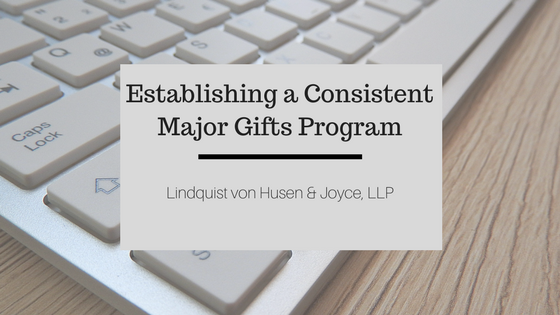
For every $100 gained in giving in 2016, $95 was lost through the absence of repeat donors, according to the 2017 Fundraising Effectiveness Survey conducted by the Fundraising Effectiveness Project.
Donor retention has hovered around 50 percent for the past decade, but that dropped a bit to 45 percent in 2016, according to the survey of 797 American charities.
Of those charities that showed healthy gains of 15 percent or more in the past year, they cited more focus on individual donor types and major gifts.
Here are some tips on establishing a consistent major gifts program that involves your passionate staff and your most engaged donors.
- Be strategic about your prospects.Your best major donor prospects are your recent donors. Look back over the past five years of giving. Assign a score to qualify the best 25-50 prospects. Determine who in your organization knows them best. Assign someone from the organization to approach each donor personally.
- Maintain a consistent strategy. Create and maintain prospect profiles. Continue to qualify new prospects and add to the list. Manage relationships through phone calls, emails, special events and personal letters of thanks.
- Involve staff and board members. Help staff and board members, who are passionate about your organization, feel a sense of ownership toward their relationships with major donors. Give them a set of nicely developed tools and materials to be effective in their communications as well as consistent with the strategy. This can include takeaway materials from an event, social media channels and letter templates they can customize. Make sure to debrief after any events to discuss next steps with new potential donors and enhancements to existing donor relationships.
- Host small and more frequent events. Intimate gatherings in small venues or in board members’ homes can create a sense of intimacy with the organization, allowing donors to get to know each other and learn about results of their giving. Events can offer goodwill pledges, but avoid long-term pledge forms at the event. Send home materials and follow up for renewals or major gifts.
While it seems major gifts are a strong indicator of success among charities, a diversified fundraising program is a more sustainable strategy. For more ideas on budgeting and tax strategies to balance levels of giving, talk to the nonprofit advisory team at LvHJ.








